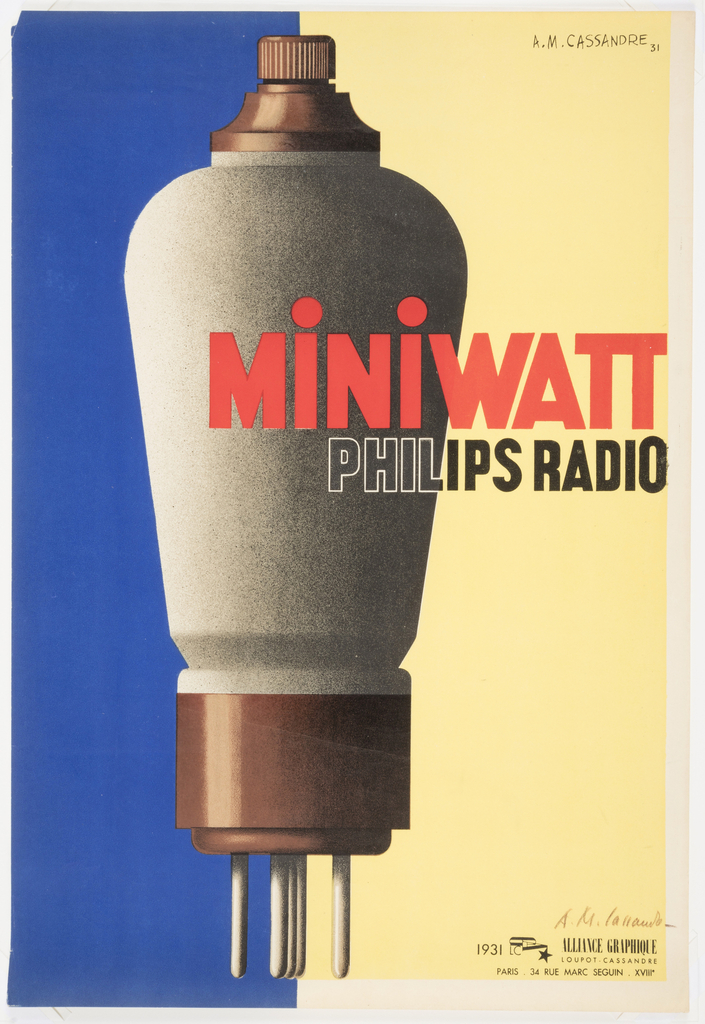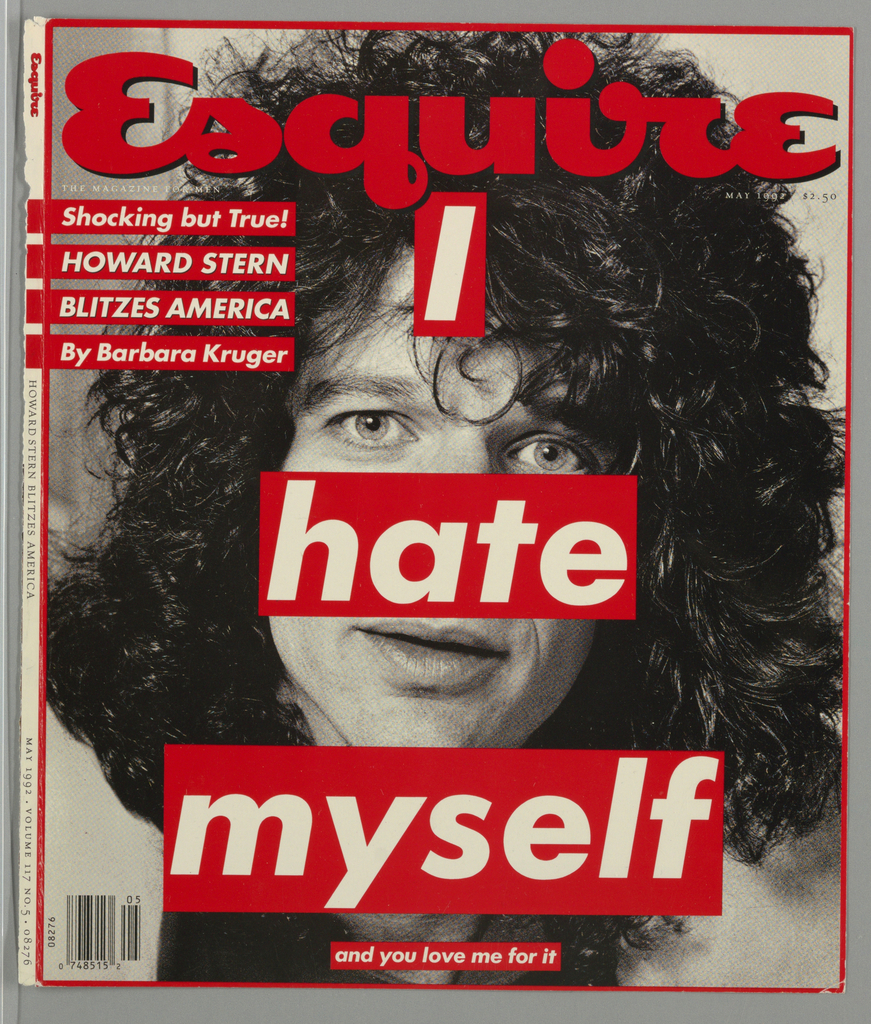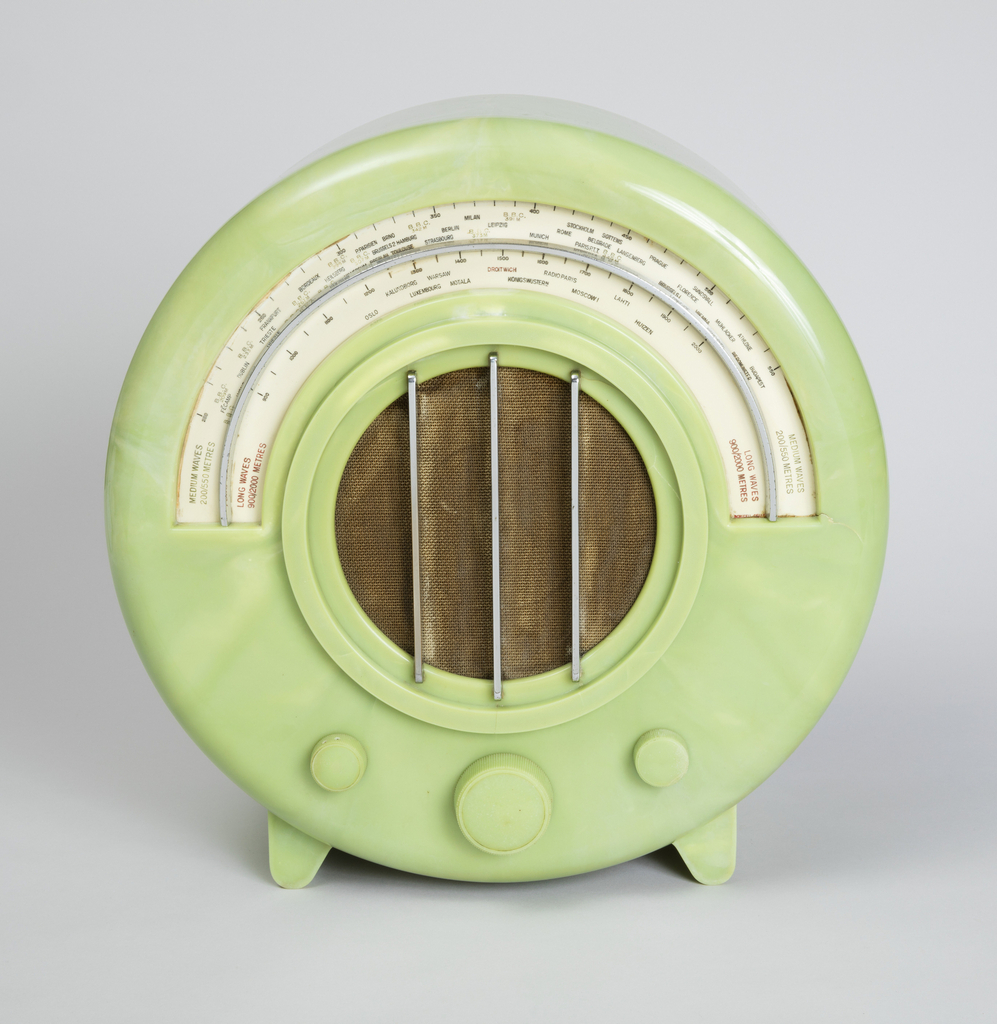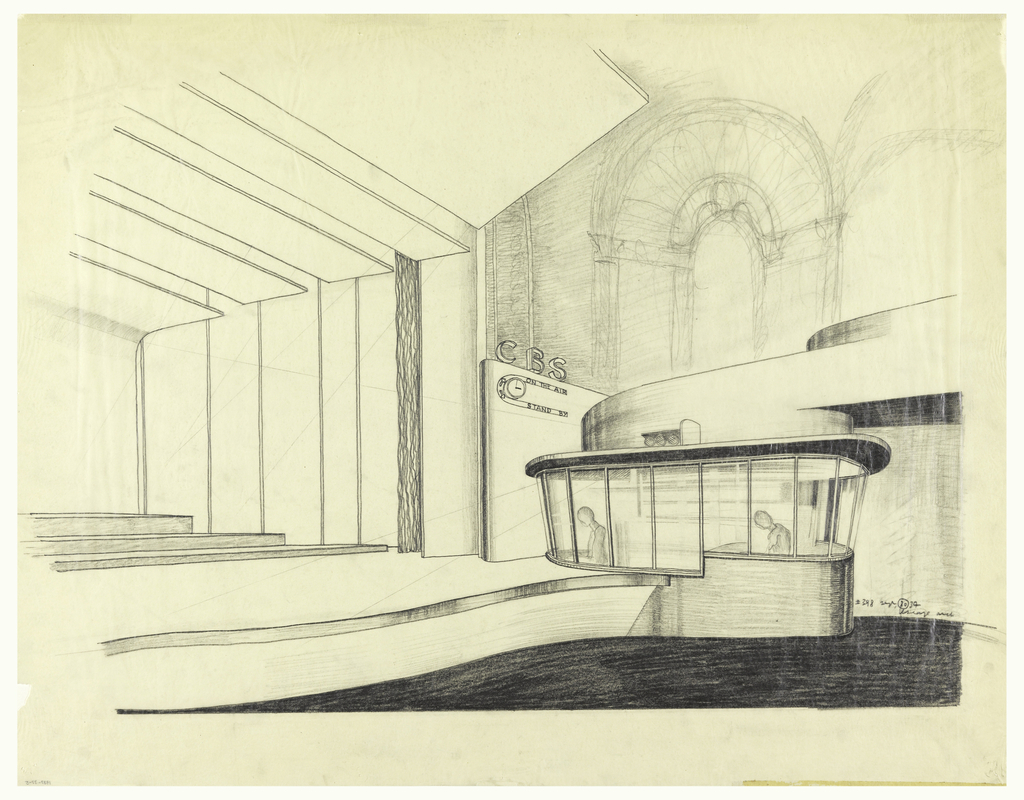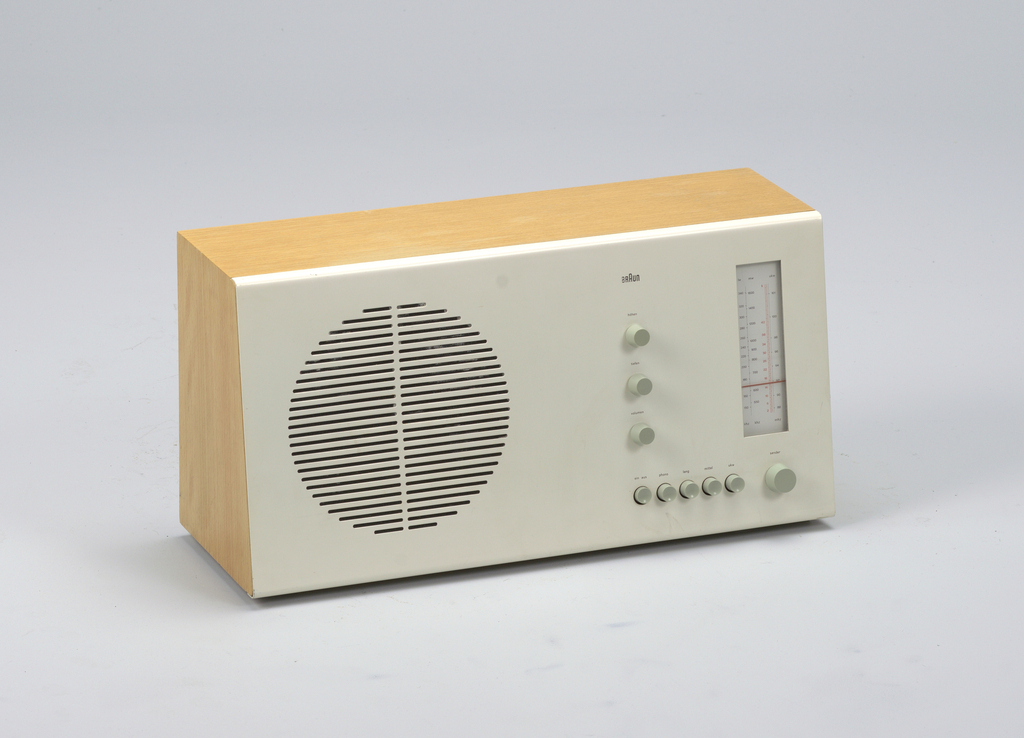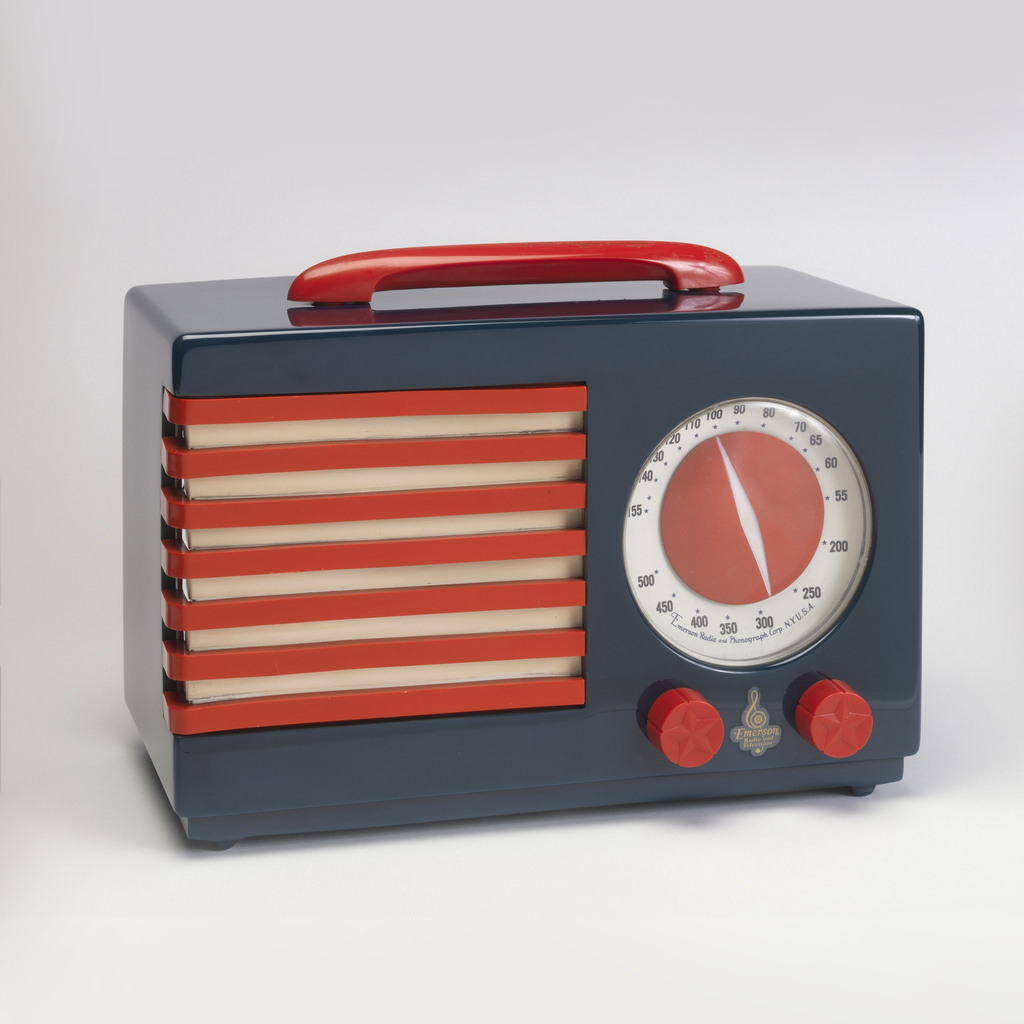When legendary French graphic designer A.M. Cassandre was hired in 1931 to produce this poster for the Dutch light bulb and radio tube manufacturer Philips, he was at the high point of his career. Together with fellow poster designer Charles Lupton, Cassandre had founded the printing and publishing collective Alliance Graphique in Paris, France.[1] Cassandre...
Known for her bold engagement with popular culture and mass communication, American conceptual artist Barbara Kruger provokes and entices the viewer with her cover design for the May 1992 issue of Esquire. Featuring a close-up, black and white photograph of the controversial shock-jock Howard Stern, the superimposed text obscures significant portions of his face, excluding...
The cost and large size of early radios made them status objects for the home. Their housings were made of wood and often imitated cabinet furniture in traditional styles. But, by the early 1930s and the rise of Modernism, sophisticated consumers began to update their interiors, and furnishings such as radios followed suit. In 1930,...
In 1937, Cooper Hewitt acquired blueprints and drawings made by Swiss-American architect William Lescaze. The drawing above shows Lescaze’s 1934 plan for the redesign of New York’s Avon Theater at 251 W 45th street. The original theater, designed by architect Eugene De Rosa, was known as the Klaw Theatre. The name changed to the Avon...
From the exhibition, industrial designer Dieter Rams' 1961 portable radio.
The Patriot radio was designed by noted industrial designer Norman Bel Geddes and manufactured by the Emerson Radio and Phonograph Corporation in 1939. The radio is made from Opalon, a thermoplastic similar to Bakelite, which came into widespread use in the 1930s. The late 1930s saw the United States begin to emerge from the Great...
This is the third interview in Chapter 2 in my new book, Designing Media Tim Westergren, February 2009 In 2000 Tim Westergren founded Pandora, the personalized Internet radio service. Based on his Music Genome Project, Pandora selects songs and artists with similar musical qualities to a sample chosen by the listener and creates a “radio...
Designing Media, a Book, DVD and Website from The MIT Press I was working on Designing Media for a couple of years while I was still at IDEO, before coming to the Cooper-Hewitt. It’s a partner volume to my first book Designing Interactions in that it combines the book with a DVD and a website,...
